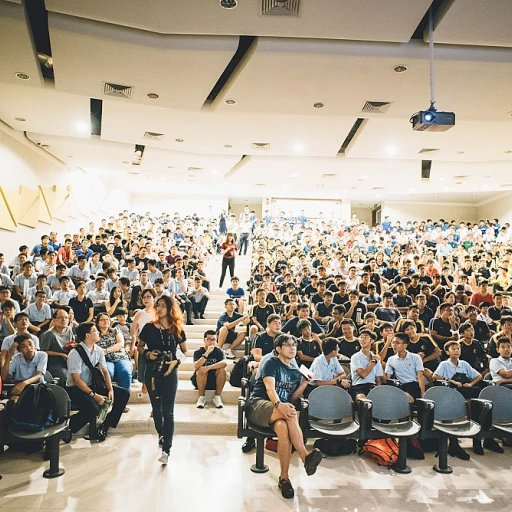
The Basics of Time Off Bidding
Introduction to the Time Off Bidding Process
Understanding the dynamics of time off bidding is crucial for effective workforce management. At its core, the concept revolves around a bidding process where employees place requests for vacation time based on a predetermined schedule. This process is integral to vacation planning for many organizations, allowing both employees and management to align expectations and ensure that vacation requests are granted fairly and efficiently. There are several fundamental aspects of the time off bidding system:- Annual Vacation Allotments: Most companies allow employees to bid for their preferred vacation time based on a yearly allotment. This keeps the process organized and anticipates the needs of employees well in advance.
- Structured Bidding Periods: Employees are often required to place their bids within a specific window or period. This time frame ensures that all requests are considered simultaneously and that the system can efficiently allocate time slots.
- Bidding Rounds: Some organizations utilize multiple rounds of bidding, where initial requests time are entered and adjustments are made in subsequent rounds based on availability.
- CLS Fill and Stroke Width Parameters: In more advanced systems, algorithms like CLS (Constraint Logic Satisfiability) are employed to fill in gaps in the schedule, determining the best fit based on employee preferences and operational needs.
- Transparent Process: A crucial aspect is maintaining transparency. Employees feel more confident in the process when the framework is clearly communicated and consistently applied.
Benefits of Time Off Bidding for Employees
Enhancing Employee Satisfaction Through Time Off Bidding
Time off bidding can significantly enhance employee satisfaction by providing a fair and transparent process for vacation requests. When employees feel they have a say in their vacation planning, it boosts morale and engagement. The bidding process allows employees to bid for their preferred time off, ensuring that their requests are considered in a structured manner.
Flexibility and Fairness in Vacation Planning
One of the primary benefits of time off bidding is the flexibility it offers. Employees can view available vacation periods and submit their time requests accordingly. This system ensures that requests are granted based on a fair bidding process, reducing the chances of conflicts and dissatisfaction. By allowing employees to participate in the scheduling process, management can create a more harmonious work environment.
Improving Workforce Management
Effective workforce management is another advantage of implementing a time off bidding system. By organizing vacation requests through a structured bidding system, management can better plan for staffing needs and ensure that there are no disruptions in operations. This proactive approach helps in maintaining productivity while accommodating employee needs.
Long-term Benefits for Employee Engagement
In the long term, a well-implemented time off bidding process can lead to increased employee engagement and retention. When employees see that their time requests are handled fairly and transparently, they are more likely to feel valued and committed to their organization. This can lead to a more stable and motivated workforce.
For more insights on optimizing management strategies, you might find Mastering the Art of Service Inventory Management helpful.
Challenges in Implementing Time Off Bidding
Overcoming the Hurdles of the Bidding Process
While time off bidding holds several advantages for both management and employees, it's not without its challenges. Implementing a successful bidding process requires diligent preparation and a comprehensive understanding of potential setbacks.
Firstly, one of the main challenges lies in addressing all employees’ preferred time requests. In environments where CLS fill and scheduling are tightly wound, this can quickly become a complex issue. Carefully planned vacation scheduling can help, but it might not accommodate everyone's desired vacation time.
The bidding process can also be hampered by a lack of transparency. Employees need to feel like their requests are being handled fairly, which requires a clearly communicated process. If the system lacks transparency, it might lead to skepticism among the workforce, causing a stroke of dissatisfaction and reducing trust in management. In this regard, utilizing a robust bidding system that allows employees to view requests in real time can mitigate some of these issues.
Another potential pain point is the demands placed on the management side. Proper implementation of time off bidding systems involves a meticulous process to ensure all vacation requests are considered and appropriately scheduled. Balancing these demands against the need to fill critical positions during vacation periods can strain resources. Automated bidding systems, however, can streamline this by filling gaps effectively, thereby optimizing workforce management.
Finally, technology plays a double-edged role. While it streamlines vacation planning and request management, there's a learning curve involved. Organizations need to ensure that both management and employees are comfortable with the technology used. To boost security and compliance, it's vital to adopt solutions that protect employee data without compromising usability. An example can be seen here.
Address these challenges by establishing a well-defined policy that takes into account the organization's unique needs and communicates effectively with all employees to foster trust and transparency in the bidding process. This ensures a smooth operation and enhances employees' overall satisfaction with their vacation planning.
Strategies for Effective Time Off Bidding
Crafting a Successful Time Off Bidding Strategy
Implementing a successful time off bidding process requires a strategic approach that balances the needs of the business with the preferences of employees. Here are some key strategies to consider:
- Clear Communication: Ensure that all employees understand the bidding system, including how to submit vacation requests and the criteria for granting them. This transparency helps employees feel valued and reduces confusion.
- Set Defined Periods: Establish specific time frames for when employees can submit their bids. This helps in managing the scheduling process efficiently and ensures that requests are handled in a timely manner.
- Prioritize Fairness: Use a fair and consistent method for evaluating bids. Whether it’s based on seniority, a rotating schedule, or a point system, fairness is crucial in maintaining employee trust and satisfaction.
- Leverage Technology: Utilize workforce management software to streamline the bidding process. These systems can automate the collection and evaluation of time requests, reducing the administrative burden on management.
- Plan for Peak Periods: Anticipate high-demand times such as holidays or school vacations. By planning ahead, management can ensure adequate staffing levels while accommodating as many employee requests as possible.
- Feedback Loop: After each bidding cycle, gather feedback from employees to identify areas for improvement. This continuous improvement process helps refine the system and enhances employee satisfaction over the long term.
By implementing these strategies, organizations can create a time off bidding system that not only meets operational needs but also respects employee preferences, leading to a more harmonious workplace environment.
Technology's Role in Time Off Bidding
Importance of Technology in Revolutionizing Time Off Bidding
In the modern workplace, leveraging technology has become integral to streamline the time bidding process. The use of advanced workforce management systems can significantly enhance the precision and efficiency of managing vacation requests, making sure the scheduling process remains smooth and employee-friendly.
Technology aids in real-time tracking of vacation bidding processes, ensuring that employees can access a system that provides an up-to-date view of available time slots. Moreover, integrating technology allows for real-time notifications, ensuring that employees are promptly informed about the status of their time requests and requests granted.
Another significant advantage technology brings is in handling the bulk of vacation planning. During peak vacation periods, having an automated bidding system that can prioritize preferred time off bids based on certain criteria helps in managing requests efficiently. This not only saves managerial time but also improves transparency within the bidding process.
The Role of Automation and Data Analytics
Automation plays a pivotal role in minimizing the stroke width of errors typically associated with manual processes. With automated systems, the bidding period is meticulously managed, and cls fill parameters are consistently maintained. Such systems help in accommodating last-minute changes with the capacity to fill gaps faster, making the process seamless.
Additionally, data analytics contributes to understanding employee preferences over the long term. Analyzing patterns in annual vacation requests provides insights that help in refining the bidding process to align better with employees' needs, thus enhancing overall employee satisfaction and ensuring that employees feel valued in the decision-making process.
Case Studies: Time Off Bidding in Action
Real-time Applications of Time Off Bidding
In order to understand the practical application of time off bidding, examining case studies from various organizations can provide valuable insights. Through the successful implementation of a bidding process, companies have improved their workforce management, allowing employees to better plan for their annual vacation periods while ensuring smooth operational schedules. One approach includes utilizing a comprehensive bidding system to manage time requests. By incorporating a bidding system, companies create a structured process where employees place bids for their preferred vacation time. This system helps manage requests time more effectively and reduces conflicts, letting employees feel more valued and heard. Key Observations from Case Studies:- Scheduling Efficiency: Organizations have found that time bidding systems can streamline scheduling efforts by allowing employees to request vacation time in advance. This proactive planning helps in maintaining a balanced workforce management system during peak and off-peak periods.
- Employee Satisfaction: By granting vacation requests through a fair bidding process, companies have noted increased employee satisfaction. Employees appreciate a process where their input is not only considered but also plays a critical role in the decision-making.
- Adaptable Systems: The flexibility of a bidding system means companies can adapt to changing workforce dynamics. Whether adjusting the stroke width of requests granted or managing cls fill and cls stroke issues, these systems offer real-time adjustments to meet varied requirements.












